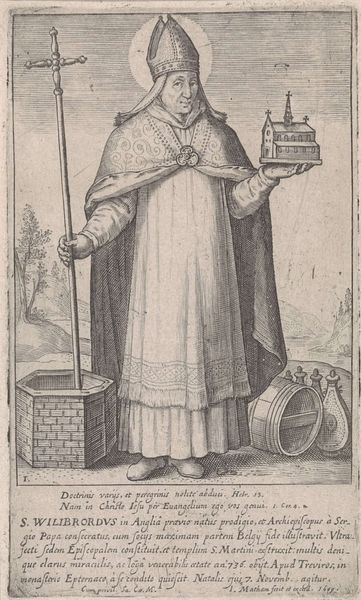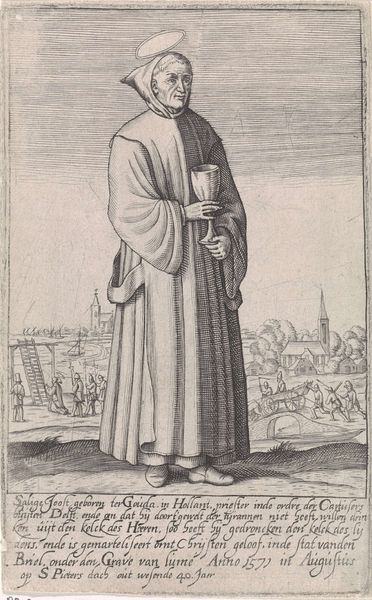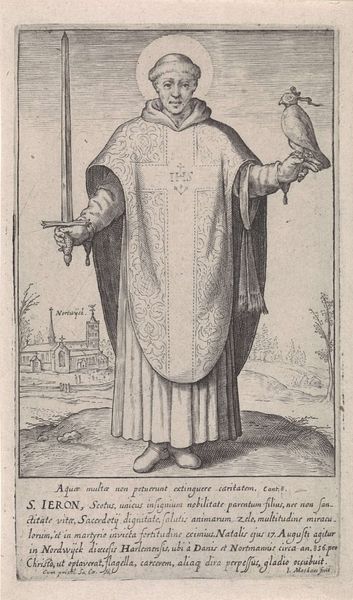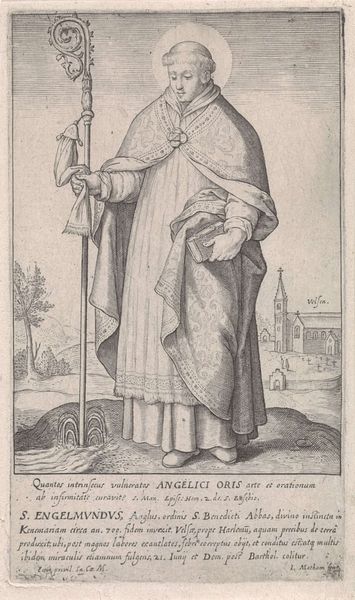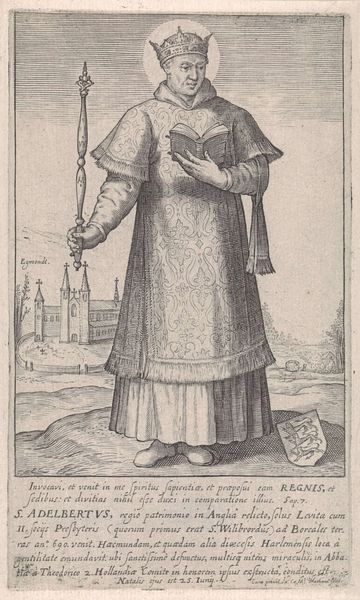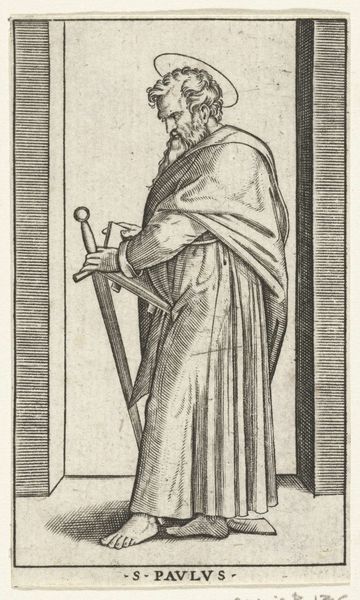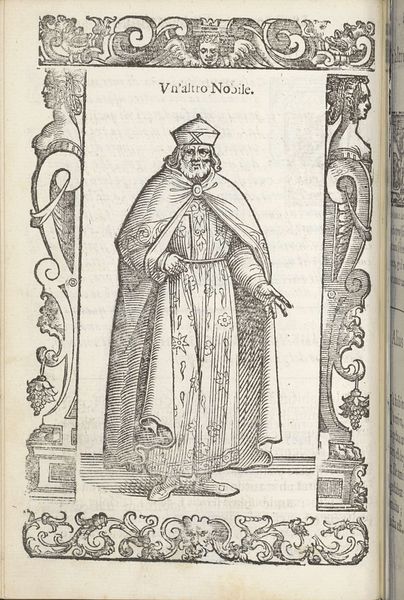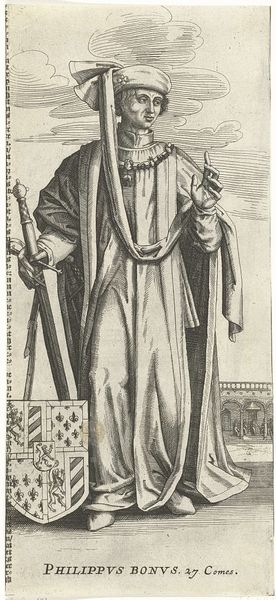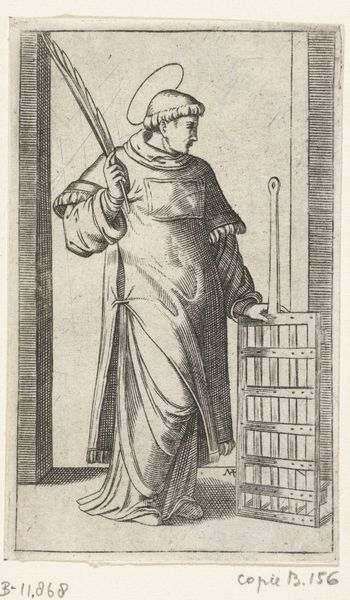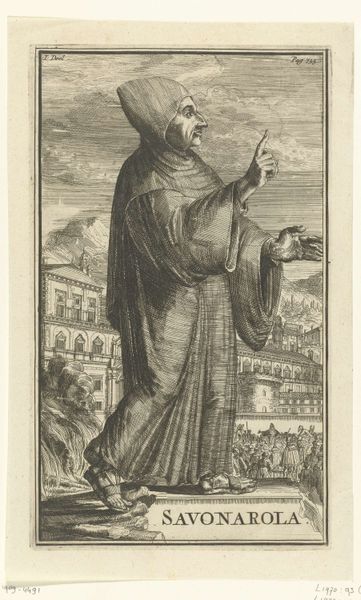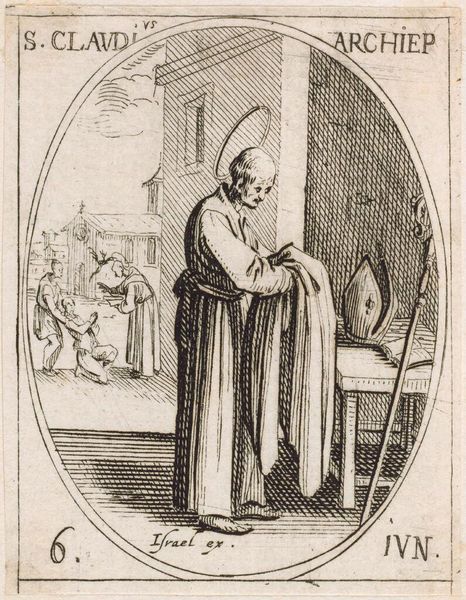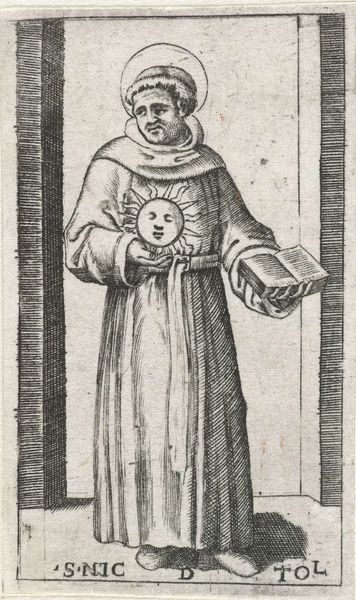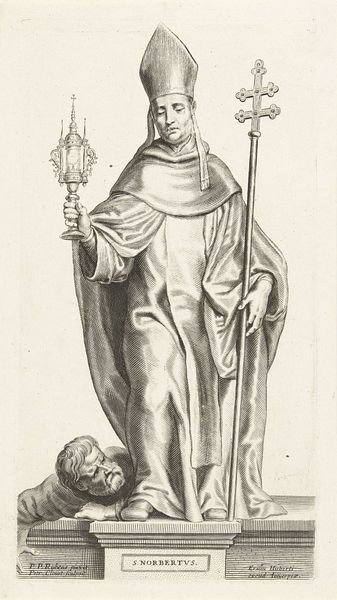
print, engraving
#
portrait
#
baroque
# print
#
old engraving style
#
engraving
Dimensions: height 145 mm, width 87 mm
Copyright: Rijks Museum: Open Domain
Curator: Jacob Matham created this engraving, “H. Engelmundus van Engeland,” sometime between 1607 and 1631. You can currently find it here at the Rijksmuseum. What’s your immediate take on it? Editor: My first impression is one of austerity, though it's hard to divorce that feeling from the religious iconography at play here. He cuts an imposing figure, barefoot, gazing with otherworldly calm at the viewer. There is an interesting dichotomy with what he carries in either hand; earthly and divine, maybe? Curator: Indeed, Matham's composition guides us to consider precisely these contrasting elements. Note how the saint’s figure dominates the pictorial space, arranged symmetrically, echoing the serene detachment you mentioned. The book he carries is juxtaposed by a large walking staff on the left. Observe the clean, precise lines defining his garments and face; it all speaks to a certain idealization. Editor: It does, yet considering Engelmundus’s story—an English Benedictine monk who brought Christianity to Kennemerland in the 8th century— I find myself reflecting on the work's implications within the context of religious and colonial expansion. His serenity, then, feels like a gloss over the complexities of cultural conversion and power dynamics, a reminder that hagiography often silences more nuanced historical narratives. The church visible behind him is built upon this history. Curator: That’s insightful. Looking more closely at the engraving technique, though, notice how Matham uses varying line weights to create depth and texture. The play of light and shadow, particularly on the saint's robe, is remarkable. You get the sense of volume and substance, even within this two-dimensional medium. There’s beauty in its structural rendering. Editor: Of course. I recognize the formal skill, but cannot separate that craft from the larger questions about religious power it raises for me. Curator: Ultimately, perhaps this tension between form and historical context enhances our viewing. The crisp precision of the engraving allows us to focus on this very dichotomy within a historical figure whose legacy is not easily reduced. Editor: Agreed, the sharp contrast achieved through the printmaking process mirrors the sharply contrasting perspectives one must use to view not only the work, but its complicated historical echoes as well.
Comments
No comments
Be the first to comment and join the conversation on the ultimate creative platform.
